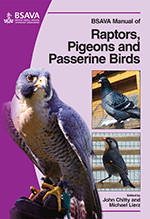
Full text loading...

The integument is a complex organ which mediates between an organism and its environment. In birds, the most obvious roles of the skin are protection from harmful environmental influences and thermoregulation. This chapter advises on integument, musculoskeletal system, body cavity, digestive system, respiratory system, urogenital system, cardiovascular system, lymphatic system, endocrine system, nervous system and senses.
Anatomy and physiology, Page 1 of 1
< Previous page | Next page > /docserver/preview/fulltext/10.22233/9781910443101/9781910443101.5-1.gif

Full text loading...





















